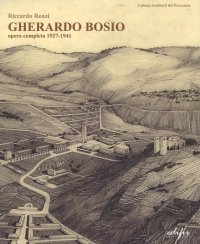Gio. Benedetto Castiglione Genovese. Il Grechetto a Roma. Committenza e opere
Edited by Orlando Anna and Francesco Rotatori.
Genova, 2023; paperback, pp. 304, col. ill., cm 23x29.
cover price: € 150.00
|
Books included in the offer:
Gio. Benedetto Castiglione Genovese. Il Grechetto a Roma. Committenza e opere
Edited by Orlando Anna and Francesco Rotatori.
Genova, 2023; paperback, pp. 304, col. ill., cm 23x29.
FREE (cover price: € 150.00)
Giovan Antonio Dosio Da San Gimignano Architetto e Scultor Fiorentino tra Roma, Firenze e Napoli
Edited by Emanuele Barletti.
Photographs by BACHerin Paolo and Saverio De Meo.
Prima edizione 2011.
Firenze, 2011; bound, pp. 844, b/w and col. ill., tavv., cm 24x28,5.
FREE (cover price: € 98.00)
Vincenzo Meucci
Co-Editore: Cassa di Risparmio di Firenze.
Firenze, 2015; hardback, pp. 304, col. ill., cm 25x29,5.
(Arte).
FREE (cover price: € 50.00)
Gherardo Bosio. Opera Completa 1927-1941
Firenze, 2016; paperback, pp. 368, b/w and col. ill., cm 23x28.
(Architetti del Novecento. Storia e archivi).
FREE (cover price: € 60.00)
Alabaster Sculpture in Europe (1300-1650)
Harvey Miller Publishers
Edited by Marjan Debaene.
English Text.
London, 2022; bound, pp. 312, 360 col. ill., cm 24x28.
ISBN: 1-912554-92-5 - EAN13: 9781912554928
Subject: Sculpture
Period: 1000-1400 (XII-XIV) Middle Ages,1400-1800 (XV-XVIII) Renaissance
Languages: 
Weight: 1 kg
Alessandro Cecchi Paone € 8.55
€ 9.00 -5 %
Fabio Gigante € 25.65
€ 27.00 -5 %
Francesca Cenerini € 18.05
€ 19.00 -5 %
















